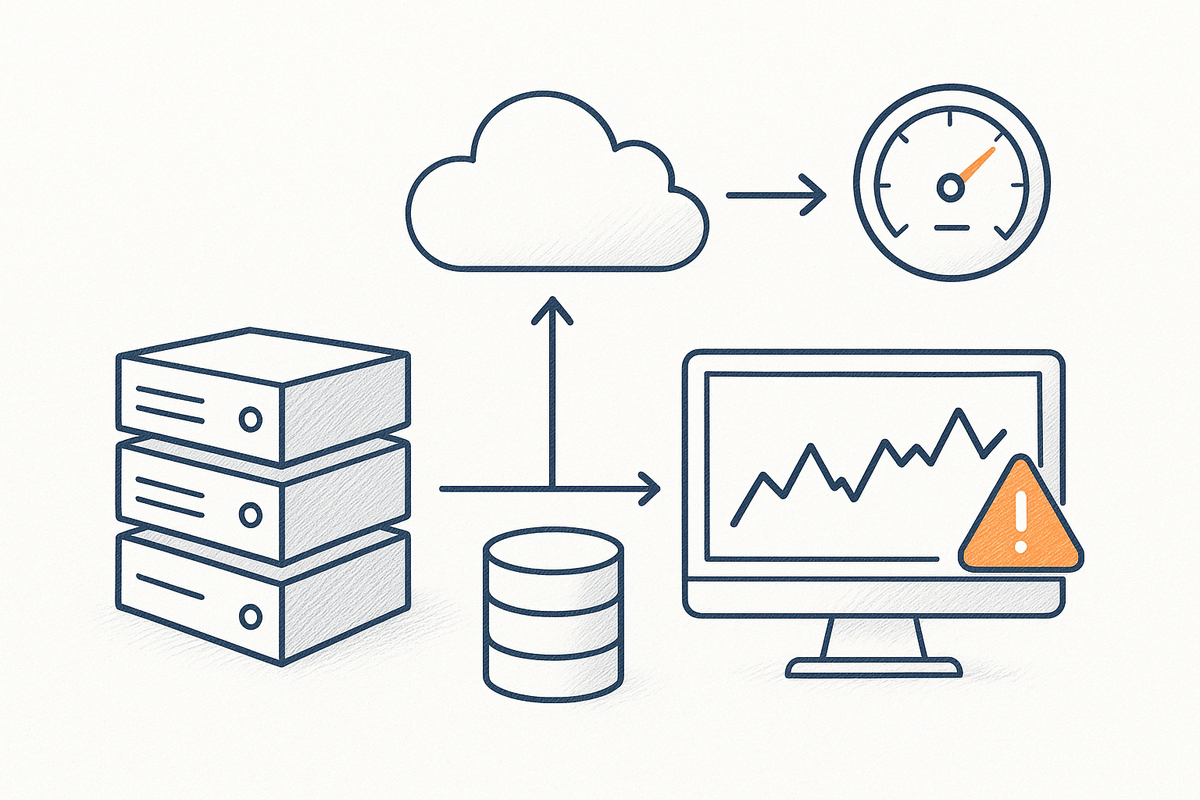Optimizing Infrastructure Measurement with OpenTelemetry

Introduction
In today’s fast-paced world of DevOps, having a keen eye on infrastructure measurement is indisputable. Observability isn’t just a buzzword; it’s the backbone of our ability to troubleshoot, optimize, and ensure reliability across systems. With various tools at our disposal, I’ve settled on OpenTelemetry for its powerful and flexible capabilities in capturing metrics, traces, and logs. The goal of this article is simple: I aim to share my hands-on experiences with OpenTelemetry, offering concrete examples that you can apply directly in your environment.
Understanding OpenTelemetry
Overview of Components
OpenTelemetry is comprised of three main components: metrics, traces, and logs—think of them as the holy trinity of observability. Metrics provide quantifiable data about your systems, traces help in tracking complete request flows, and logs provide context to those metrics and traces. When used together, they create a comprehensive picture of system behavior.
Getting Started with OpenTelemetry
Before diving in, it’s essential to have your environment ready. OpenTelemetry supports multiple programming languages; I typically use Python and Node.js for my applications. Here’s how to get started:
- Verify Installation: Ensure the installations went smoothly by importing the packages in Python and confirming no import errors occur.
Install Required Libraries:For Python, I run:
pip install opentelemetry-api opentelemetry-sdk opentelemetry-instrumentationImplementing Metrics Collection
Defining Key Metrics to Collect
The first step is to determine what metrics truly matter. Keep it relevant to your performance indicators; whether that’s response times, error rates, or system resource utilization, having clear objectives will steer your metrics collection in the right direction. Remember, too much data can be as problematic as too little—it’s all about balance!
Code Example: Collecting Metrics
Here’s a simple example of how to set up a counter for tracking requests in a Python application:
from opentelemetry import metrics
from opentelemetry.sdk.metrics import MeterProvider
# Set up the meter provider
metrics.set_meter_provider(MeterProvider())
meter = metrics.get_meter(__name__)
# Create a counter
my_counter = meter.create_counter("my_counter", description="A counter for my application")
# Increment the counter
my_counter.add(1)
Once you’ve implemented this, you ought to see the metrics flowing into your OpenTelemetry Collector—it’s like watching your plant grow, provided you’re not using a black thumb!
Implementing Tracing
Fundamentals of Tracing
As your system interacts with various services, tracing becomes vital for diagnosing how requests propagate through your applications. It helps pinpoint where delays or errors are occurring in the process.
Code Example: Implementing Tracing
Here’s how to instrument an HTTP request using OpenTelemetry:
from opentelemetry import trace
from opentelemetry.instrumentation import requests
# Set up tracing
trace.set_tracer_provider(TracerProvider())
tracer = trace.get_tracer(__name__)
@tracer.start_as_current_span("http_request_span")
def make_request():
response = requests.get("https://api.example.com/data")
return response.content
This snippet effectively wraps the HTTP request, allowing you to analyze its performance nuances.
Implementing Logging
Importance of Logs
Logs complement metrics and traces beautifully—offering context to raw data. They reveal what was happening at the time a particular metric was generated or a trace was created.
Code Example: Contextual Logging
Here’s how to integrate logging with OpenTelemetry:
import logging
from opentelemetry import trace
# Set up basic logging
logging.basicConfig(level=logging.INFO)
logger = logging.getLogger(__name__)
@tracer.start_as_current_span("log_span")
def log_something():
logger.info("This is an info log with OpenTelemetry context")
With these logs, you can peel back layers of operational mysteries when something goes awry.
Sending Data to Backend Solutions
Choosing Your Backend
OpenTelemetry supports various backends, like Prometheus and Jaeger. Choose based on your monitoring tools and needs. For instance, I often leverage Prometheus for metrics due to its robust querying capabilities.
Code Example: Configuration (YAML)
Here’s a sample configuration for the OpenTelemetry Collector:
receivers:
otlp:
protocols:
grpc:
http:
processors:
batch:
exporters:
prometheus:
endpoint: "localhost:9090"
service:
pipelines:
metrics:
receivers: [otlp]
processors: [batch]
exporters: [prometheus]
With this configuration, I can effortlessly send data to my chosen backend.
Monitoring, Troubleshooting, and Best Practices
Common Pitfalls and Trade-offs
One of the common pitfalls I’ve encountered is over-instrumentation, leading to performance bottlenecks. It's essential to find the sweet spot where you're collecting valuable data without compromising responsiveness.
Troubleshooting Tips
If you find that data isn’t appearing as expected, double check your configurations. Ensure that your instrumentation is set up correctly, and that your receiver endpoints are open and reachable.
Conclusion
As I wrap up this exploration of OpenTelemetry, the key takeaway is the importance of establishing a robust observability framework. By effectively collecting metrics, tracing requests, and logging events, you can enhance your infrastructure measurement significantly. It’s time to apply these insights to your environment and elevate your operational practices.
